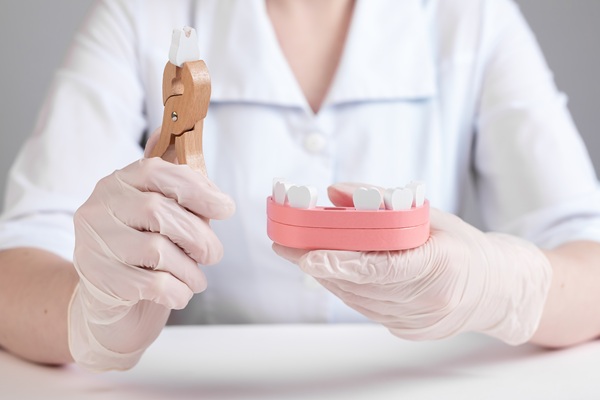How a Wisdom Tooth Extraction Is Done
is often necessary in order to promote good oral health. The procedure can be daunting to some; however, the result is a healthier oral cavity, thus ensuring better overall health.
Because wisdom tooth extraction is an involved procedure, it can be helpful to know what to expect beforehand. This allows for the opportunity to prepare appropriately, ask questions, and go over concerns.
The steps of a wisdom tooth extraction
Outlined below are the steps of a wisdom tooth extraction. Keep reading to find out more!
1. Anesthesia
Before a wisdom tooth extraction is performed, the dentist will apply anesthesia. Anesthesia is needed in order to promote numbing, reduce the ability to feel discomfort, and ease anxiety regarding the procedure. Anesthesia may be administered intravenously or via injection, depending on the severity of the extraction.
2. The removal
After anesthesia is applied, the dentist will remove any area of bone that may be blocking access to the wisdom tooth. For example, if the tooth is impacted in the jaw or behind other teeth, certain areas of hard tissue may have to be removed.
Once the wisdom tooth is accessible, the dentist will use a dental drill to divide it into sections. Dividing the wisdom tooth into sections allows for easier removal. Once divided, a tool called an extraction forceps is used to actually extract the tooth.
3. Disinfecting
After the tooth is removed, the area has to be cleaned out. Similar to a filling or crown, when the damaged parts are removed, the empty space in the tooth must be cleaned out. The same goes for wisdom tooth extraction. When the tooth is taken out, there is an empty space that will have to heal. In order to ensure proper healing, the area has to be disinfected so that bacteria do not grow and spread.
Disinfecting involves cleaning out the empty space with a water stream and gentle disinfectant solution. This part of the procedure does not take long at all; however, it is one of the most important steps.
4. Closing
The last part of a wisdom tooth extraction is closing, which involves stitching the open wound shut to prevent debris from entering. In some scenarios, the wound may be small enough that stitches are not necessary; however, that is rare. After stitches are placed, the dentist will place oral gauze to control bleeding and promote clotting. Gauze is often necessary even after the patient returns home, as bleeding usually lasts for a few hours. It is advised to change the gauze every hour or so to ensure cleanliness.
Prepare for a wisdom tooth extraction
When looking for more information on wisdom tooth extraction, it is best to consult directly with a dentist. The dentist can outline any patient-specific steps, which may differ slightly from those listed above. Additionally, preparation tips can be provided, which can quite helpful to review and consider beforehand. To find out more, reach out today!
Request an appointment here: https://merrick.davincidentalarts.org or call Da Vinci Dental Arts of Merrick at (516) 377-1300 for an appointment in our Merrick office.
Related Posts
Dental implants are a highly effective solution for replacing missing or damaged teeth. They offer a permanent and durable option that not only restores the function of the teeth but also enhances the smile's appearance. As a modern and advanced treatment, dental implants have become the preferred choice for individuals seeking a long-lasting and natural-looking…
Taking children to a kid friendly dentist is a great idea, especially if there is a noticeable dental issue, such as white spots. White spots should never be ignored, regardless of the patient's age. However, children need to visit a kid friendly dentist because their teeth are still developing. Learn more about taking a child…
While people often confuse general and cosmetic dental services, they are not the same. For instance, general dentists and cosmetic dentists hold the same degree. However, cosmetic dentists have additional training in improving a smile's appearance through professional teeth whitening, dental veneers, and other cosmetic treatments. If you want a radiant, picture-perfect smile, cosmetic dentistry…
A cosmetic dental service evaluation is vital in achieving your dream smile. However, many believe it is the same as the evaluation they receive during their regular dental checkups; it is not. This evaluation will allow you to discuss your dental concerns and overall goals with the dentist and receive expert guidance on the various…
